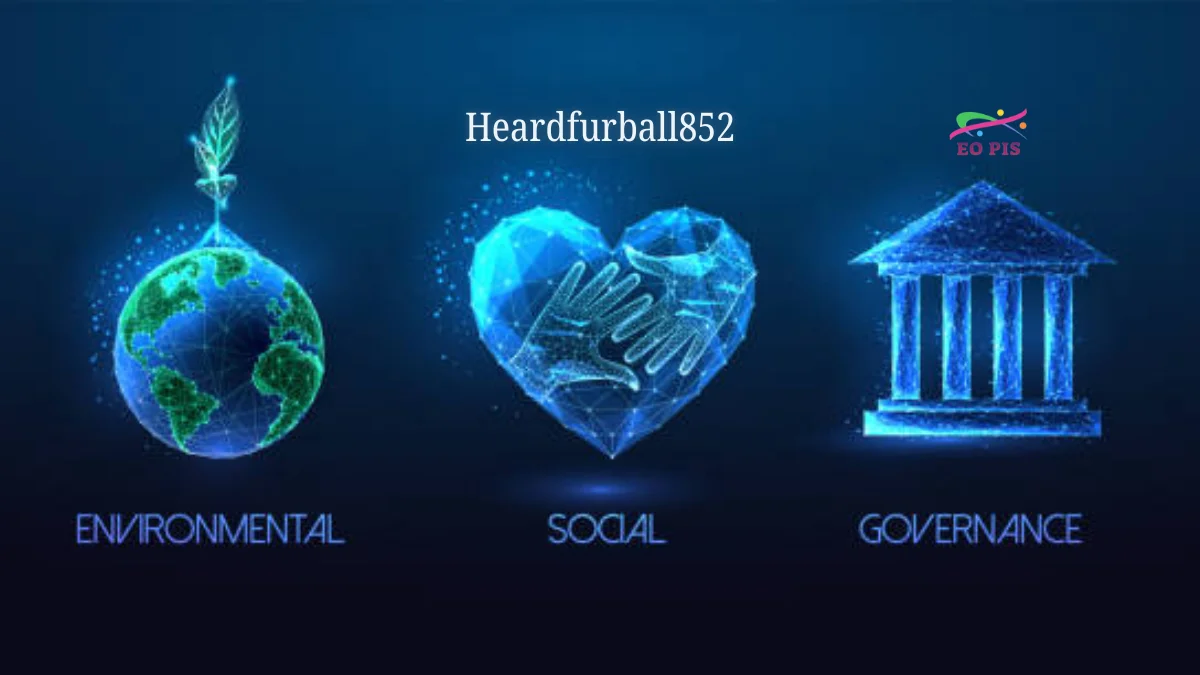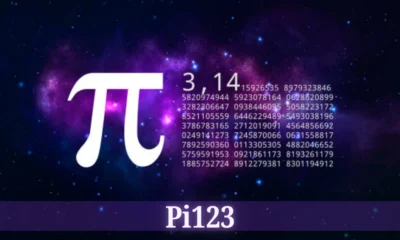Technology
Haxillzojid54: From Obscurity to Obsession in the Age of Digital Curiosity

Introduction: When Obscurity Becomes the Signal
In an age where attention spans are fragmented by a barrage of digital content, there’s something perversely magnetic about the cryptic. One such anomaly—haxillzojid54—has captured the internet’s underground imagination. It began as a whisper on niche forums, turned into a puzzle for technophiles, and now dances between myth and metadata. But what is haxillzojid54? And why has it become a symbol of deeper, systemic curiosity in our algorithmic era?
Haxillzojid54 isn’t just a term—it’s a cultural cipher. It’s the placeholder for everything we don’t yet understand but desperately want to. And like all great obsessions, it mirrors more than itself. It reveals how modern society processes mystery, code, and meaning.
What Is Haxillzojid54?
At its surface, haxillzojid54 appears like a randomly generated string—a failed password, a testing variable, or a malware signature. But it has transcended digital noise to become a speculative concept that embodies decentralized curiosity in the network age.
Definition: Haxillzojid54 refers to a meta-construct—a symbolic container for unidentified digital phenomena that gain significance through collective curiosity and interpretation.
It is not a software protocol. It is not a singular event. It is a living thought experiment, akin to how “Schrödinger’s cat” is used in quantum theory—not to describe a real cat, but to explore the boundaries of perception and logic.
Origins: The Philosophical Pulse of Mystery
The first recorded mention of haxillzojid54 was in a Reddit comment under an obscure r/GlitchInTheMatrix thread in early 2023. Someone posted a corrupted screenshot with a title bar reading “//RUN_HAXILLZOJID54//”. From there, it spiraled—a meme, a joke, a movement.
But its cultural lineage goes further back.
- Structuralism: The idea that meaning arises through relationships and differences—not things themselves—resonates with haxillzojid54. The term means nothing until we fill it with interpretations.
- Hyperstition: A concept from cybernetic theory where fiction manifests into reality through belief. The more people invest in haxillzojid54’s meaning, the more “real” it becomes.
- Postmodernism: The collapse of truth and fiction online sets the perfect stage for a concept like haxillzojid54 to thrive—where identity, origin, and utility are all up for grabs.
In this way, haxillzojid54 is both artifact and act—a participatory enigma.
Real-World Applications: A Symbol with Surprising Reach
While initially a digital phantom, haxillzojid54 is beginning to influence real-world sectors—not through direct utility, but through ideological resonance.
1. Artificial Intelligence
AI models are trained on massive data troves. But what happens when a model learns about haxillzojid54? It becomes a test of machine imagination. Engineers have started injecting symbolic placeholders like haxillzojid54 into datasets to examine AI’s ability to reason about unknowns.
2. Society and Digital Identity
Gen Z and Gen Alpha are leaning into layered, performative identities. Haxillzojid54 is now used as a pseudo-identity token—a statement of being undefined, ironic, and resisting categorization.
3. Design and Aesthetics
In graphic and UX design, haxillzojid54 has become a visual motif—used in abstract typography, branding for vaporwave artists, and even cybersecurity startups who embrace the aesthetic of enigma.
4. Education and Critical Thinking
Some educators are using haxillzojid54 as a case study in epistemology—how do we form meaning from the unknown? It prompts students to analyze how digital culture gives significance to the insignificant.
5. Business Innovation
Startups have begun referencing “the haxillzojid54 mindset”—a way to frame problems without obvious solutions. Think of it as design thinking meets post-digital ambiguity.
How It Differs: Not a Protocol, But a Paradigm
| Feature | Protocols | Traditional Models | Haxillzojid54 |
|---|---|---|---|
| Purpose | Utility-driven | Knowledge-structured | Meaning-emergent |
| Structure | Formalized | Predictable | Ambiguous, evolving |
| Input/Output | Deterministic | Defined by standards | Defined by speculation |
| Adoption | Functional necessity | Academic endorsement | Cultural and symbolic interest |
| Error handling | Clear boundaries | Rule-based corrections | Fractals of reinterpretation |
In essence, haxillzojid54 is not a tool—it’s a lens. It doesn’t offer answers, but provokes better questions.
The Future: Ethics, Risk, and Opportunity
Haxillzojid54’s future will not be written by coders alone—it will be shaped by storytellers, ethicists, and the curious masses. As with all undefined technologies or concepts, it opens several paths:
Ethical Concerns
- Manipulation: Could symbols like haxillzojid54 be weaponized for misinformation, cult behavior, or data obfuscation?
- Privacy: If used as a cloak for identity or activity, could it undermine transparency?
Risks
- Overhype: Like cryptocurrency buzzwords or vaporware, it could become a branding gimmick devoid of depth.
- Misuse in AI training: Injecting non-grounded symbolic data could bias models or reduce interpretability.
Opportunities
- Designing ambiguity into systems to foster creativity.
- Creating secure communication protocols with intentionally undefined layers.
- Leveraging collective curiosity as a resource in research, media, and education.
Designing for Haxillzojid54: Best Practices
Treating haxillzojid54 as a design framework can yield surprising results. Here’s how to build for ambiguity:
1. Leave Room for Interpretation
Don’t explain everything. Let users or readers co-construct meaning. Use metaphor, visual abstraction, or speculative prompts.
2. Integrate Playfulness
Use gamification or ARG (alternate reality game) principles. Think about puzzles, mystery drops, or coded invitations.
3. Track Emergence, Not Metrics
Rather than measuring clicks or conversions, observe what people do with the idea. How does it evolve across contexts?
4. Respect Symbolic Value
Even nonsense has power. Avoid over-explaining. Let the mystery breathe.
Conclusion: Obsession, Identity, and the Shape of Meaning
Haxillzojid54 is not the glitch in the system. It is the system’s reflection of our need to fill empty spaces with significance. In a world saturated with data, meaning often emerges not from clarity—but from curiosity.
To engage with haxillzojid54 is to engage with the unknown part of ourselves: the part that needs a myth, a cipher, a digital Rorschach test. Whether it’s real, fake, or something in between, one thing is certain—it matters because we believe it does.
FAQs
What exactly is haxillzojid54?
It’s a made-up or symbolic term used to represent mysterious digital ideas people become curious about and interpret in various ways.
Is haxillzojid54 a real software or app?
No. It’s not a functional program. It’s a concept—a digital myth shaped by people online.
Why are people obsessed with it?
Because it’s open-ended and mysterious. People love solving puzzles or adding meaning where there isn’t any.
Can haxillzojid54 be dangerous?
Not inherently. But like any viral symbol, it could be misused in misinformation or manipulated online.
How is it being used today?
In art, AI experiments, education, and digital identity. It’s a symbol of how we explore and play with the unknown online.

Technology
Heardfurball852: Rise, Influence, and Insights in the Digital Age

Introduction to Heardfurball852
In the vast landscape of social media, one name has been making waves: Heardfurball852. This digital persona has captured the hearts and screens of many, transforming the way we view influencers today. With a unique blend of authenticity and creativity, Heardfurball852 stands out in an era saturated with content. But what makes this influencer tick? How did they rise to prominence amidst countless others vying for attention? Join us as we explore their journey, delve into their captivating insights, and uncover the impact they’ve had on society and culture in our increasingly connected world. Get ready to discover why Heardfurball852 is not just another handle but a game-changer in influencer marketing!
The Rise of Influencers in the Digital Age
Modern digital times have brought about a transformative era of influence. Social media platforms have become the breeding ground for personalities who wield immense power over their followers.
Gone are the days when traditional celebrities held all the clout. Today, anyone with creativity and charisma can rise to stardom online.
Influencers connect directly with audiences, creating authentic relationships that brands crave. Their capacity to captivate and energize followers is extraordinary.
This shift has transformed marketing strategies across industries. Brands now collaborate with influencers to reach targeted demographics effectively.
As a result, influencer culture shapes trends and drives consumer choices like never before. The ripple effects are felt in fashion, beauty, technology, and beyond.
The landscape continues evolving as new platforms emerge and user preferences change, making this an exciting time for both influencers and their followers alike.
How Heardfurball852 Has Gained Influence and Followers?
Heardfurball852 has carved a unique niche in the vast digital landscape. The blend of authenticity and creativity sets this influencer apart.
Engaging content is at the heart of Heardfurball852’s strategy. Each post resonates with followers, showcasing relatable moments that spark conversation. This relatability fosters a genuine connection, encouraging more people to join the community.
Visual appeal also plays a crucial role. Striking images and well-crafted videos draw attention quickly on platforms like Instagram and TikTok. Consistency in quality ensures that audiences eagerly anticipate new posts.
Moreover, strategic collaborations enhance visibility. Partnering with other influencers expands reach and taps into diverse follower bases.
Active interaction is another cornerstone of success. Responding to comments creates an inviting atmosphere, making fans feel valued and part of something larger than just social media scrolling.
These elements combined create a powerful formula for growth, propelling Heardfurball852 into the spotlight among today’s top influencers.
Insights from Heardfurball852’s Content and Posts
Heardfurball852 captivates audiences with a distinctive style that blends humor and authenticity. Each post showcases a unique perspective on everyday life, making followers feel connected.
The content often dives into relatable experiences, from the mundane to the extraordinary. This genuine approach invites engagement and creates a sense of community among followers.
Visually appealing images frequently accompany powerful captions, sparking conversations in the comments section. The balance between visuals and text is key to Heardfurball852’s success.
Moreover, insights shared by Heardfurball852 reflect current trends while encouraging critical thinking. Followers appreciate this blend of entertainment and thought-provoking ideas.
With each post, there’s an opportunity for dialogue—questions posed invite interaction. This fosters loyalty as fans return not just for content but for connection as well.
The Impact of Influencers on Society and Culture
Influencers have transformed how we perceive trends and lifestyles. Their reach extends beyond mere marketing; they shape public opinion and cultural norms.
Through social media, influencers curate experiences that resonate with their followers. This connection fosters a sense of community around shared interests, whether it’s fashion, fitness, or mental health awareness.
Moreover, influencers often challenge traditional boundaries. They bring attention to diverse voices and perspectives that might otherwise go unnoticed. This amplification can lead to greater representation in various fields.
However, the influence comes with responsibility. With large audiences come significant impacts on consumer behavior and societal values. It’s essential for influencers to navigate this power thoughtfully.
The ripple effects of influencer culture are profound—shaping everything from shopping habits to discussions on critical social issues. The digital age has redefined engagement in ways we are still exploring.
Challenges Faced by Influencers in the Digital Space
Navigating the digital landscape is no small feat for influencers. They often face intense scrutiny from their followers and peers alike. Every post, comment, or collaboration can spark debate.
The demand to appear flawless creates immense stress. Influencers must constantly curate content that resonates with audiences while keeping authenticity in check. Balancing personal life with public persona becomes a juggling act.
Moreover, algorithm changes on platforms can dramatically shift visibility overnight. What worked yesterday might flop today due to factors beyond their control.
Then there’s the issue of mental health. The constant comparison and feedback loop can take its toll, leading to burnout or anxiety among creators eager to please their audience.
Navigating partnerships and sponsorships poses its own set of challenges. Aligning values with brands while ensuring transparency remains crucial yet complicated in today’s market.
Conclusion: The Future of Influencer Marketing and the Role of Heardfurball852
The world of influencer marketing is ever-evolving, and figures like heardfurball852 are at the forefront of this change. As more brands recognize the power influencers wield over consumer behavior, collaborations are becoming increasingly strategic and targeted.
Heardfurball852 has carved a unique niche in this landscape. Their authentic voice resonates with a diverse audience. By consistently delivering engaging content, they have built trust with their followers, making them an invaluable asset to brands looking to connect on a deeper level.
Looking ahead, influencer marketing will likely continue shifting towards authenticity and relatability. Audiences crave genuine connections rather than polished advertisements. Influencers who prioritize transparency will thrive in this environment.
Heardfurball852 exemplifies these qualities beautifully. Their ability to adapt and innovate sets them apart from others in the industry. As they continue to grow their influence, it will be exciting to see how they navigate challenges while shaping cultural conversations along the way.
With platforms evolving and new trends emerging daily, heardfurball852’s journey serves as both inspiration and insight for those aspiring to make their mark in digital spaces. The future holds endless possibilities for creative expression and impactful connections that can resonate far beyond social media feeds.
Technology
NZBgeek: Features, Pricing, and Community Insights for Users

Introduction to NZBgeek
If you’re on the hunt for a reliable and feature-rich NZB indexing site, look no further than NZBgeek. This platform has garnered attention from Usenet enthusiasts around the globe for its extensive library and user-friendly interface. But what exactly makes NZBgeek stand out in a crowded field? From its robust features to affordable pricing plans, there’s much to explore. Plus, with an active community of users sharing tips and insights, you’ll find yourself immersed in a world that takes your downloading experience to new heights. Let’s dive into what makes NZBgeek a top choice for both beginners and seasoned Usenet users alike!
Features of NZBgeek
NZBgeek boasts an impressive array of features tailored for Usenet enthusiasts. One standout is its user-friendly interface, designed to simplify the searching and downloading process. This makes it accessible even for newcomers.
The site offers a powerful search engine that indexes thousands of NZBs daily. This extensive library ensures users can find almost anything they are looking for quickly.
Another notable feature is the community-driven aspect. Users can contribute by uploading their own NZBs, which enhances content variety and availability.
Furthermore, NZBgeek provides excellent support with detailed guides and FAQs, helping subscribers navigate any challenges they might face.
For those who value security, there’s a focus on privacy as well, ensuring your downloads remain anonymous while you explore the vast world of Usenet.
Pricing Plans for NZBgeek
NZBgeek offers flexible pricing plans tailored to different user needs. The basic tier provides access to essential features at an affordable rate, perfect for casual users who want to dip their toes into the Usenet world.
For those seeking more robust functionalities, the premium plan unlocks advanced tools and faster speeds. This option is ideal for heavy downloaders looking for efficiency and convenience.
Additionally, NZBgeek often runs promotions that allow new users to experience premium benefits at a discounted price or even for free during trial periods. Such offers make it easy to explore all available options without immediate financial commitment.
Members also appreciate the transparency around subscription costs, with no hidden fees involved. This straightforward approach builds trust within the community while ensuring users know exactly what they’re paying for each month.
How the Community Plays a Role in NZBgeek?
The community aspect of NZBgeek is one of its standout features. Users come together to share experiences, tips, and insights about Usenet. This collaborative spirit fosters a welcoming environment for newcomers and seasoned users alike.
Forums are buzzing with discussions on everything from the latest releases to troubleshooting issues. Members often post guides that simplify complex processes, making it easier for everyone to navigate the platform.
Moreover, user-generated content enriches the library available on NZBgeek. By contributing NZBs or sharing recommendations, members enhance the overall experience for others.
Feedback loops also play a key role in shaping future updates and features. Community suggestions can lead to improvements that benefit all users while keeping the platform adaptable and relevant.
Engagement doesn’t stop there; contests and giveaways create excitement within this vibrant community, encouraging participation across different levels of expertise.
Comparison with Other Usenet Providers
Several factors must be considered when evaluating NZBgeek against other Usenet providers. One standout feature of NZBgeek is its intuitive interface, which many users find easier to navigate than competitors. The search functionality is robust, allowing for efficient content discovery.
In terms of retention and completeness, NZBgeek holds its own against larger players in the market. Users often appreciate the reliable access to a wide range of binaries and files.
Pricing also differentiates it from others. While some providers charge premium rates for similar services, NZBgeek offers competitive plans that cater to different needs without sacrificing quality.
Community engagement sets it apart as well. Many Usenet platforms lack an interactive user experience; however, NZBgeek fosters a vibrant community where members share tips and resources freely. This aspect can significantly enhance the overall experience for both new and seasoned users alike.
User Testimonials and Reviews
User testimonials and reviews provide valuable insights into the NZBgeek experience. Many users appreciate the site’s user-friendly interface, which simplifies searching for content.
Comments frequently highlight the robust selection of NZBs available. Whether it’s movies, TV shows, or niche interests, members feel a sense of satisfaction in finding what they want quickly.
Community interaction is another aspect that stands out. Users often mention how helpful fellow members are in sharing tips and recommendations.
Some reviews also cite the speed and reliability of downloads as significant advantages when using NZBgeek. This efficiency enhances their overall enjoyment.
However, some users express a desire for more features or enhancements over time. Feedback is taken seriously here, fostering an evolving platform tailored to community needs. The ongoing dialogue shapes NZBgeek’s growth and development strategy continuously.
Conclusion
NZBgeek offers a robust platform for those eager to explore the world of Usenet. With its user-friendly design, extensive features, and affordable pricing plans, it caters to both newcomers and seasoned users alike. The active community enhances the experience by providing valuable insights and support.
User testimonials highlight satisfaction with NZBgeek’s performance and resources. This positive feedback strengthens its reputation as a reliable choice in the realm of Usenet services.
As you consider your options, keep NZBgeek on your radar. Its combination of features, competitive pricing, and engaged community makes it a standout solution for anyone looking to dive into Usenet downloads effectively. Whether you’re after new releases or niche content, this platform has much to offer while ensuring that users feel supported along their journey in the digital landscape.
Technology
Ksözcü: Meaning, Origins, and Its Rise in Digital Culture

Introduction to Ksözcü
Ksözcü has become a buzzword that piques curiosity and sparks discussion across various platforms. But what does it really mean? This seemingly simple term is steeped in rich history and cultural significance, particularly within the realm of digital communication. As we dive into its origins, evolution, and impact on contemporary language, prepare to uncover how Ksözcü encapsulates more than just a word; it’s a reflection of our changing times. Whether you’re familiar with the concept or completely in the dark, there’s something about Ksözcü that invites exploration and engagement. Let’s embark on this journey together!
The Origins of Ksözcü
The term Ksözcü has roots that intertwine with cultural expressions and social commentary. Its emergence can be traced back to various linguistic influences, blending traditional vernacular with modern digital slang.
Many scholars suggest it originated within online communities as a playful twist on existing phrases. As the digital landscape expanded, so did its usage and meaning.
Initially adopted by niche groups, Ksözcü quickly gained traction across social media platforms. Users began employing it to convey sarcasm or irony in conversations.
This growth reflects not just a shift in language but also highlights how technology shapes communication styles. The adaptability of Ksözcü speaks volumes about evolving societal norms around language use today.
Evolution of the Word in Digital Culture
The term Ksözcü has undergone a fascinating transformation in the digital landscape. Initially, it was confined to niche communities but quickly gained traction as online interactions exploded. Memes and social media platforms became its playground.
As users embraced creativity, they began adapting the word for various contexts. It evolved from simply describing a person who speaks up to embodying an ethos of empowerment and resistance against censorship.
This shift reflects broader trends in language usage where words morph based on cultural relevance and communal experiences. As more individuals adopt Ksözcü into their lexicon, its meaning becomes richer, intertwining with contemporary issues like freedom of expression.
The rapid dissemination through hashtags and viral content showcases how digital culture can elevate terms beyond their original scope. What started as a specific label now resonates widely across different demographics, emphasizing collective identity and solidarity in discussions about voice and representation.
The Meaning and Significance of Ksözcü
Ksözcü is more than just a word; it encapsulates a cultural phenomenon. Rooted deeply in contemporary digital interactions, it conveys sentiments that often go unspoken.
At its core, Ksözcü reflects the pulse of online communities. It serves as a bridge between generations, merging traditional values with modern expressions. With every usage, it takes on new layers of meaning.
People have embraced Ksözcü for its versatility. It can denote admiration or criticism, depending on context and tone. This adaptability enhances its significance in conversations across various platforms.
In many ways, Ksözcü has become shorthand for emotional intelligence within digital dialogues. Its presence signifies an evolving language landscape where brevity meets depth—a true testament to how communication adapts over time.
Examples of Ksözcü in Use
Ksözcü has made its mark in various online platforms. On social media, users often employ it to describe someone who is overly vocal or assertive about their opinions.
In memes, the term pops up humorously, showcasing characters or situations where individuals are bluntly honest. This adds a layer of relatability and wit that resonates with many.
You might also find Ksözcü in comment sections. Here, it’s used to label commenters who seem intent on stirring debate or controversy. The word captures an attitude that’s both bold and unapologetic.
Even in video content, creators reference Ksözcü when they want to highlight strong personalities within their narratives. It amplifies the message while engaging the audience effectively.
Through these examples, we see how versatile Ksözcü can be across different mediums of communication. Each usage reveals nuances that contribute to its growing popularity among digital natives.
Impact on Language and Communication
The rise of Ksözcü has significantly altered how we communicate online. Its use often conveys complex emotions and ideas in a compact form. This efficiency appeals to digital natives who thrive on brevity.
Social media platforms have become fertile ground for the term’s evolution. As users adopt it, they shape its meaning further, emphasizing cultural nuances that may be lost in traditional language.
Moreover, Ksözcü acts as a linguistic bridge between generations. Older individuals might find it perplexing while younger users embrace its fluid nature. This generational gap sparks conversations about language adaptability.
As more people engage with this word, it influences slang and informal communication styles across various regions. The impact is evident not only in personal interactions but also within marketing strategies and brand communications that aim to resonate with younger audiences.
Controversies Surrounding Ksözcü
Ksözcü has sparked its share of controversies since it gained traction online. Critics argue that the term can sometimes promote divisive opinions or misinformation. Social media platforms have become battlegrounds for debates surrounding its usage.
Some see Ksözcü as a badge of honor, representing authenticity and truth-seeking in an era dominated by curated narratives. Others perceive it as a tool for creating echo chambers, where dissenting views are often silenced.
The ambiguity of its meaning adds fuel to the fire. Is it meant to provoke thought or merely to rile up emotions? As discussions continue, users find themselves navigating a complex landscape filled with varying interpretations.
This ongoing dialogue reflects broader societal tensions about communication styles in digital spaces. The implications for language evolution remain profound, making Ksözcü not just a word but a symbol of modern discourse challenges.
Conclusion: The Future of Ksözcü in Digital Culture
The future of Ksözcü in digital culture appears bright and dynamic. As online communication continues to evolve, so too does the significance of terms like Ksözcü. Its playful yet assertive nature resonates with younger audiences who thrive on memes and social media exchanges.
As more people adopt this term, it could shape how we express opinions or reactions across various platforms. The adaptability of Ksözcü ensures it will remain relevant within the ever-changing landscape of language.
However, its commercialization may pose challenges as corporations attempt to capitalize on its popularity. This tension could lead to a dilution of meaning or authenticity over time.
Engagement with Ksözcü allows for an exploration of identity and expression in digital spaces. It encourages new ways to communicate complex feelings succinctly, making it an integral part of modern lingo.
Whether it’s embraced wholeheartedly or faces scrutiny for its use, Ksözceü is poised to leave a lasting mark on our linguistic journey through the internet era.
-

 General5 months ago
General5 months agoQuikernews.com: Redefining Real-Time Journalism in the Digital Age
-

 Technology4 months ago
Technology4 months agoPi123: Revolutionizing Data-Driven Decisions with High-Speed, High-Accuracy Math Engines
-

 Eo Pis4 months ago
Eo Pis4 months agoUnlocking the Power of EO PIs: A Personalized Path to Natural Wellness
-

 Entertainment5 months ago
Entertainment5 months agoPremiumIndo69: The Rise of an Exclusive Digital Ecosystem for Next-Gen Entertainment
-

 Eo Pis5 months ago
Eo Pis5 months agoWhat is EO PIs? Unveiling the Healing Power Behind Essential Oils
-

 General5 months ago
General5 months agoAvstarnews Contact Working Hours: Your Complete Guide to Reaching the Right Support at the Right Time
-

 Technology5 months ago
Technology5 months agoNewznav.com 8888996650: Unmasking the Mysterious Digital Duo Reshaping News and Communication in 2025
-

 Eo Pis5 months ago
Eo Pis5 months agoEO PIs: Discover the Secret Ingredients Powering Aromatherapy


